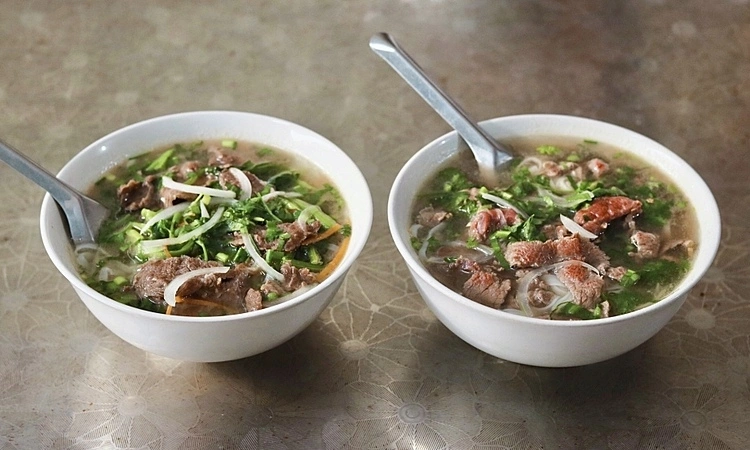Answer:
Pho and bun are popular breakfast dishes in Vietnam, but they are often quite salty. An average bowl of standard pho bo (beef noodle soup) contains over 3-4 grams of salt. A typical bowl, with approximately 140 grams of noodles, 100 grams of beef, spring onions, onions, fat, and 350 ml of broth, provides 350-400 Kcal, along with protein, fiber, sugar, and salt. The fiber content is relatively low (only 0.4 grams), while the salt content is 3.8 grams.
This means a single bowl of pho nearly fulfills the World Health Organization's (WHO) recommended daily salt intake of 5 grams. Consuming a bowl of pho along with other meals throughout the day significantly increases the risk of exceeding the recommended salt intake.
Excessive salt intake can lead to high blood pressure, cardiovascular issues, kidney problems, osteoporosis, dehydration, and swelling. In severe cases, it can cause nausea, dizziness, vomiting, and intensified headaches. Thirst and dry mouth are common indicators of high sodium levels, as excess salt leads to fluid deficiency, prompting the body to signal its need for rehydration.
The majority of the salt in pho is concentrated in the broth. To reduce salt intake, it's advisable to consume only a small portion of the broth. Experts recommend avoiding additional salt for the rest of the day after having a bowl of pho for breakfast.
Consuming pho every day can also lead to nutritional imbalances. Varying your diet with a wider range of foods is recommended for both health and enjoyment.
 |
Pho has a high salt content, so consume it in moderation. Photo: Quynh Mai |
Associate Professor Dr. Nguyen Trong Hung
National Institute of Nutrition












